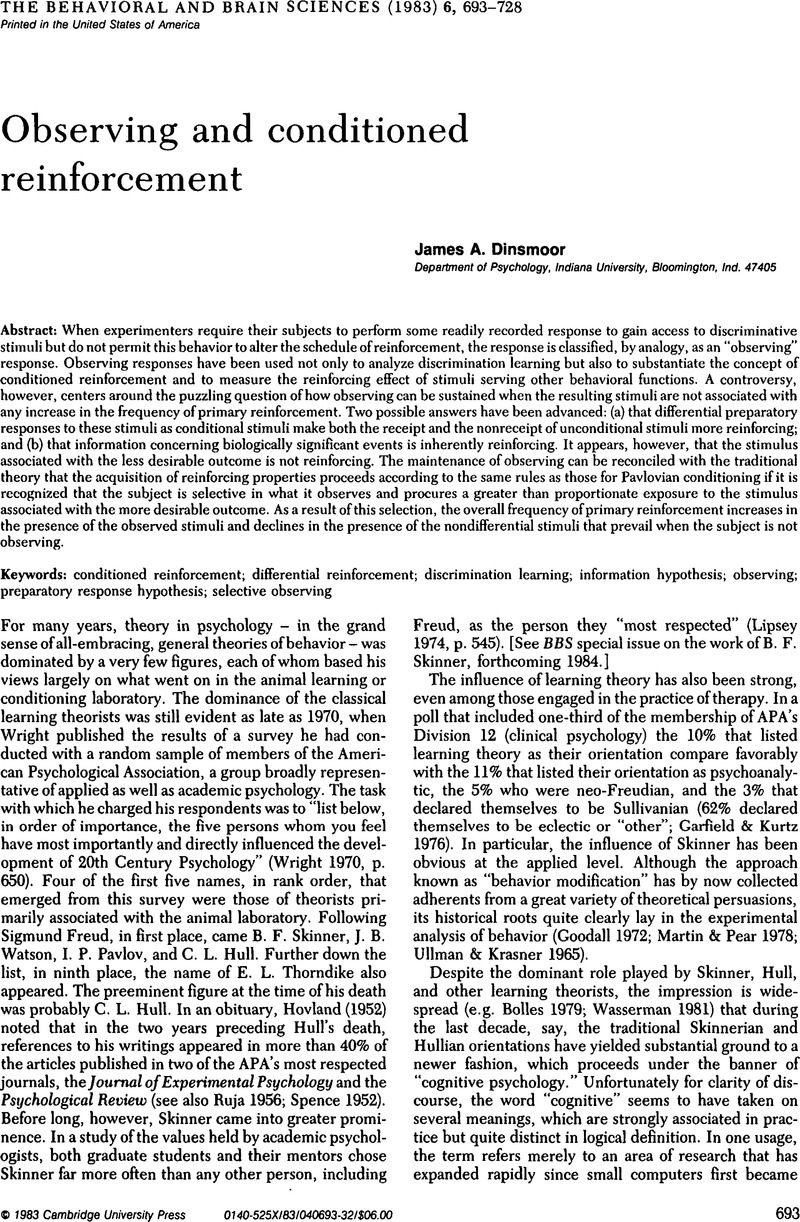Crossref Citations
This article has been cited by the following publications. This list is generated based on data provided by Crossref.
Allen, Keith D.
and
Lattal, Kennon A.
1989.
ON CONDITIONED REINFORCING EFFECTS OF NEGATIVE DISCRIMINATIVE STIMULI.
Journal of the Experimental Analysis of Behavior,
Vol. 52,
Issue. 3,
p.
335.
Gaynor, Scott T.
and
Shull, Richard L.
2002.
THE GENERALITY OF SELECTIVE OBSERVING.
Journal of the Experimental Analysis of Behavior,
Vol. 77,
Issue. 2,
p.
171.
Shahan, Timothy A.
2002.
OBSERVING BEHAVIOR: EFFECTS OF RATE AND MAGNITUDE OF PRIMARY REINFORCEMENT.
Journal of the Experimental Analysis of Behavior,
Vol. 78,
Issue. 2,
p.
161.
Shahan, Timothy A.
Magee, Adam
and
Dobberstein, Andria
2003.
THE RESISTANCE TO CHANGE OF OBSERVING.
Journal of the Experimental Analysis of Behavior,
Vol. 80,
Issue. 3,
p.
273.
Shahan, Timothy A.
Podlesnik, Christopher A.
and
Jimenez‐Gomez, Corina
2006.
MATCHING AND CONDITIONED REINFORCEMENT RATE.
Journal of the Experimental Analysis of Behavior,
Vol. 85,
Issue. 2,
p.
167.
Shahan, Timothy A.
2010.
CONDITIONED REINFORCEMENT AND RESPONSE STRENGTH.
Journal of the Experimental Analysis of Behavior,
Vol. 93,
Issue. 2,
p.
269.
Morris, Samuel L.
Vollmer, Timothy R.
and
Dallery, Jesse
2023.
An evaluation of methods for studying the effects of conditioned reinforcement on human choice.
Journal of the Experimental Analysis of Behavior,
Vol. 119,
Issue. 3,
p.
476.



